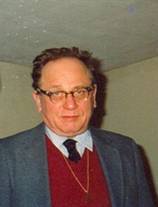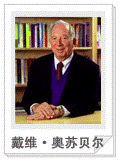|
D. P. 奥苏伯尔(David Paul Ausubel ,1918.10—2008.7 ),美国心理学家、学者,纽约市立大学研究生院荣誉教授。1940、1943、1950年相继获得哥伦比亚大学心理学硕士学位、布兰迪斯大学医学博士学位和哥伦比亚大学发展心理学博士学位,先后曾任侯利诺斯大学教育研究所教授、纽约市立大学研究生院和大学中心教授,并担任过美国心理学会、美国教育委员会、美国医学协会和白宫吸毒问题研究小组等组织机构的成员。他在医学、精神病理学和发展心理学等领域均颇有学术建树。在心理的教育学科领域中尤有突出的贡献和重大的影响。先后曾应邀赴西德、意大利、加拿大、日本、奥地利、澳大利亚和北欧等国的著名大学讲学。著述甚丰,仅就心理与教育学科而言。 |
一、主要著作
有:《儿童发展的理论与问题》(1958年,合著)、《自我发展与人格失调》(1952年)、《有意义言语学习心理学》(1963年)、《教育心理学:认知观》(1968年)、《学校学习:教育心理学导论》(1969年)等;主要论文有:《有意义言语学习和保持的归属理论》(1962年)、《组织者:一般背景与序列化言语学习》(1962年)、《认知结构与有意义言语学习的促进作用》(1963年)、《发现学习在心理与教育上的局限》(1964年)、《学习理论和课堂实践》(1967年)等。
二、在教育心理学上的主要观点
奥苏伯尔(DavidP Ausubel)是当代美国著名的教育心理学家,他在语言学习研究方面作出了巨大贡献。奥苏伯尔提出的“同化论”体现了外因是变化的条件、内因是变化的依据的辩证思想。了解新旧知识之间的同化模式,有利于人们掌握知识的一般方法。教师在进行讲解结构设计时,按照新知识本身的逻辑意义,追溯到新知识在原有认知结构中的植根点,形成符合有意义学习标准的、有针对性的讲解结构。在这样的系统分析下,才有可能抓住讲解的重点,有目的地强调各种关系,对有实质性联系的原有知识经验进行有目的的诊断,对各种关键联系的理解进行有针对性的反馈,了解学生的掌握情况。在理论的指导下,各项技能要素的应用不是简单的形式模仿,而是有明确目的的灵活运用。
|
三、学习的分类与实质
奥苏伯尔把学习分为机械学习和有意义学习,其中有意义学习需具备的条件是:学习材料对学生而言有潜在意义;学生头脑中有同化新学习材料的知识;学生具有有意义学习的意向。奥苏伯尔主张接受学习,他认为接受学习必须按“有意义学习”的标准和条件进行,接受学习的目的是建立起相应的认知结构。所谓“有意义学习”,他定义为“有意义学习过程的实质,就是符号所代表的新知识与学习者认知结构中已有的适当观念建立非人为的和实质性的联系”。所谓非人为的和实质性的联系是指新的符号或符号代表的观念与学习者认知结构中已有的表象、已经有意义的符号和概念或命题的联系。例如“dog”这个文字符号与儿童认知结构中已有的“狗”的表象建立了联系,就说明“dog”的符号学习获得了实质性的心理意义。这是最简单的有意义学习。复杂一些的如“bedroom”的学习,则必须使新知识与学生原有的“bed”和“room”的概念和表象建立联系,才能获得新概念的意义。
奥苏伯尔根据学生进行学习的方式,把学生的学习分为接受学习和发现学习;根据学习的内容,把学习分为机械学习与有意义的学习。
接受学习,即学习者把以现成的定论的形式呈现给自己的学习材料,与其已形成的认识结构联系起来,以实现对这种学习材料的掌握的学习方式。
发现学习,是在教师不加讲述的情况下,学生依靠自己的力量去获得新知识、寻求解决问题方法的一种学习方式。发现学习依靠学习者的独立发现。
机械学习,即不加理解、反复背诵的学习,亦即对学习材料只进行机械识记。有意义学习过程的实质,就是使符号所代表的新知识与学习者认知结构中已有的适当概念建立非人为的和实质性的联系。有意义学习理论强调在新知识的学习中,认知结构中的原有适当观念起决定作用,这种原有的适当观念对新知识起固定作用。有意义的学习需要具备两个条件:学生要具有有意义学习的意向,即把新知识与认知结构中原有的适当观念关联起来的意向;学习材料对学习具有潜在意义,即学习材料具有逻辑意义并可以和学生认知结构中的有关观念相联系。这两个条件缺一不可,否则会导致机械学习。
接受←→发现,机械←→有意义,这是划分学习的两个维度。这两个维度之间不是互不依赖和彼此独立的。接受学习可以是机械的,也可以是有意义的;发现学习可以是机械的,也可以是有意义的。在这两个维度之间可以有许多过渡形式。
奥苏伯尔的学习分类,是一种有创见的分类。这种分类指明了意义学习与机械学习、接受学习与发现学习的划分与区别,揭示了学生的学习是以有意义接受学习为主的规律。这对发展学生智能,培养创造力,实现“为迁移而教”的目标有重大的理论意义和指导作用。
四、学习迁移的条件和规律
学习迁移一般指一种学习中习得的经验对其他学习的影响。学习迁移并不是自动发生的,它要受某些条件的限制,其中最主要的影响因素有学习对象的共同因素、原有经验的概括水平、迁移的认知技能水平。奥苏伯尔将这些因素表述如下:第一,学习对象的共同因素。迁移都要通过新旧学习中的经验进行分析进而概括出其共同的经验成分才能实现。因此,在进行迁移时,学习对象在客观上要有共同因素。第二,原有经验的概括水平。这里的迁移不是相同经验的迁移,而是概念原理的迁移,尤其是指下位学习的迁移。心理学的研究和实验表明,经验的概括水平越高,迁移的可能性就越大,效果也就越好。第三,迁移的认知技能水平。迁移过程是通过复杂的认知活动实现的,认知技能即合法则的认知活动方式是否掌握,会影响迁移的实现。有时学习对象有共同因素,或已有知识经验的概括程度也比较高,可是学习者对新的学习内容却仍然不能实现迁移,原因是学习者虽然掌握了有关的知识,但没有掌握解决迁移中问题的认知技能。
五、讲解式教学的原则与内涵
为促成学生有意义的学习和认知结构的发展,奥苏伯尔提倡讲解式教学,要求教学内容的安排应精心设计,并提出了两条安排教学内容的原则。他指出:“不论在哪一个学科,要使教材的内容编排成序,有两个原则是适用的,这就是逐渐分化原则和综合贯通原则。”这两条原则既是有意义学习的原理,也是讲解式教学的原则。
逐渐分化原则(theprincipleofprogressivedifferentiation)是指教学内容的安排要遵循从一般到个别的原则,首先讲授最一般的、包摄性最强的观念,然后根据具体细节对它们逐渐加以分化。逐渐分化原则不仅与人类习得认知内容的自然顺序相一致,而且与人类认知结构中表征、组织和贮存知识的方式相吻合。
综合贯通原则(theprincipleofintegrativereconciliation)是指教学内容的横向组织应该考虑学生认知结构中现有观念的异同。这一原则的作用在于可使学生辨明每一观念与其他平行观念的关系,消除相互之间的矛盾与混淆,从而使知识更加清晰和巩固。
六、“先行组织者”教学策略的起源和发展
为了激活新旧知识之间的实质性联系,提高已有知识对接受知识的有效影响,奥苏伯尔提出了“先行组织者”(ad vanceorganizer)的教学策略。“先行组织者”有其严格的定义,即在正式材料学习之前,向学生介绍的与其原有的认知结构中适当的知识相联系的概括和包摄性引导材料,它在抽象、概括和包摄水平上应高于正式的学习材料并用学生熟悉的术语呈现。即先于新学习材料呈现的一种引导性材料。设计“组织者”的目的,是帮助学生稳定地纳入和保持正式学习材料中更详细和分化的内容,给学习者在已知与未知之间架起一道桥梁,从而更有效地学习新材料。“组织者”可分为陈述性组织者和比较性组织者。前者为新的学习提供最适当的类属,后者在于比较新材料与认知结构中相类似的材料。奥苏伯尔认为,在学校中,言语传授的有意义的接受学习是儿童获得书本知识的最重要的途径。根据奥苏伯尔的观点,有意义的学习有三类,即符号学习、概念学习和命题学习。设计“组织者”即在一部分概念学习和命题学习中,当学生的认知结构中还缺乏适当可利用的知识时,在呈现正式的学习材料之前,提供“先行组织者”。原有知识对新知识的同化形式主要有三种:类属、总括和并列结合。设计“组织者”有助于前两种同化形式。把新知识纳入认知结构中原有的有关方面的过程叫类属,又叫下位学习。它又可分为派生类属和相关类属。派生类属指学习材料只是被理解为认知结构中原有的概念的一个特例,或是已学过的一般命题的某一例证。相关类属指新学习材料只是原来学过的命题的扩充、精确化、修饰或限制。这类学习快而有效,但要有更概括性的知识作为同化新知识的支柱。如学生在学习新的知识前没有适当观念作为固着点,教师就要提供“组织者”。若学生学习一个概括性的新命题,而认知结构中原有的若干从属观念可以类属于这个新命题之下,便产生总括学习,又叫上位学习。
“先行组织者”的提出建筑在以下理论基础之上:认知结构是按层次加以组织的,学习者关于某一领域内的知识在认知结构中遵循不断分化的认识组织原则。具体来讲,当新材料进入认知领域时,即同认知结构中原有较高包摄性的观念相互作用并类属于它们之下。如新知识能与认知结构中稳定的原有观念相联系,材料就有可类属性,学习者就理解新知识,同时引起原有认知结构的不断分化。如学习新材料不具可类属性,学习者就倾向于机械地记忆材料内容,从而有了机械记忆与意义记忆的分类。
先行组织者理论辩证地看待接受学习,为广大教师所接受。大量实验证明,它用于教学可产生明显的积极效果,因而获得了教学界的一致肯定。 |
David Paul Ausubel(1918.10——2008.7)
|
一、resume
David P. Ausubel was born in 1918 and grew up in Brooklyn, NY. He attended the University of Pennsylvania, taking the pre-medical course and majoring in Psychology. After graduating from the medical school at Middlesex University, he completed a rotating internship at Gouveneur Hospital (NY City Department of Hospitals) located in the lower east side of Manhattan, including the Little Italy and Chinatown of 1944.
His military service began then with the US Public Health Service. He was assigned to UNRRA (United Nations Relief and Rehabilitation Administration) in Stuttgart, Germany working with displaced persons. Three psychiatric residences followed: with the US Public Health Service in Kentucky, the Buffalo Psychiatric Center, and Bronx Psychiatric Center. With assistance from the GI Bill, he earned a PH D in Developmental Psychology from Columbia University. A series of psychological professorships ensued at schools of education: the University of Illinois, University of Toronto, and in the European universities at Berne, the Salesian University at Rome, and the Officer's Training College at Munich. He received a Fulbright Research Grant in 1957-58 to do a comparative study of the vocational motivation of Maoris and Europeans. |
 |
|
In 1973 he retired from academic life to devote full time to his psychiatric practice. His principal interests in psychiatry have been general psychopathology, ego development, drug addiction, and forensic psychiatry. Dr. Ausubel published extensively : textbooks in developmental and educational psychology and books on specialized topics such as drug addiction, psychopathology, and ego development, and over 150 articles in psychological and psychiatric journals. In 1976 he received the Thorndike Award from the American Psychological Association for “Distinguished Psychological Contributions to Education”.
He retired from professional life in 1994 to devote himself full time, at the age of 75, to writing. Four books resulted.
Dr. Ausubel passed away on July 9, 2008. |
二、The Learning Theories of David P. Ausubel
The Importance of Meaningful and Reception Learning
It might seem appropriate the Ausubel came to educational psychology from the field of medicine considering that his study of the human brain provided the larger context that would enable him to study the workings of the brain more effectively. This assumption of course is in reference to one of Ausubel’s most important theories of learning, subsumption. Before considering the more specific aspects and definitions of Ausbel’s theories, the stage first needs to be set with a discussion of his comparison between rote and meaningful learning.
Rote and Meaningful Learning
In an attempt to acquire meaningful knowledge, the learner can approach the task in two different ways (Good & Brophy, 1990, p. 126). If a person attempts to memorize her driver’s license number without relating the numbers to anything more than a random series, that is rote learning. On the other hand, if a person attempts to create some connection to something that they already know, they experience meaningful learning. An example might be a man memorizing a long distance phone call by recognizing that the ten digit number is actually three series of three, three, and four digits. Furthermore, the numbers (to him) can be recalled because he is familiar with that state’s area code. The middle set of numbers is the same as the aircraft he usually flies in (747 or 727 for example), and the last four digits are a familiar high school basketball score (50-61, the home team lost). Materials learned that have relation to experiences or memories that are firm in the person’s memory are more likely to be retained. Whereas, “Rotely learned materials are discrete and isolated entities which have not been related to established concepts…“ and may soon be forgotten (Ausubel, 1962).
Is meaningful learning just what rote learning is not? This is true only if you keep in mind that meaningful learning is very connected to the process of knowledge retention within cognitive structures. Rote memory works at times for short term memory as we know from casual meetings with new people and exposure to a new joke. But the knowledge can only be effectively retained if it is meaningful, and thus must be processed in a way that it can be subsumed and anchored in the mind.
Subsumption is the process by which new information enters the consciousness and is directed or organized to fit within an already existing larger (more broad, more general, etc) category. For example, in a physics classroom the concept of magnetic fields and how they look and act may be more easily assimilated if the student has already been introduced to a general fields model that already contains electric fields and gravitational fields. The distinction about the introduction of this new information is that facts or concepts much be “subsumed“ into the larger context, subordinate concept (Good & Brophy, 1990, p. 199). Anchorage of the knowledge is dependent on how well the subsuming concepts are organized, and the degree of anchorage determines how well the knowledge is retained in the long term.
Reception and Discovery Learning
In my most recent exposure to the teaching of physics I was a part of a workshop that included 24 high school teachers in Arizona. It is appropriate to mention this group as the workshop itself was entitled “Physics Modeling and Technology“ and was a presentation of discovery learning. In fact, this modeling is considered a new and improved form of modeling in which the students are led to a laboratory, given the most general of directions, and then are released to find graphical, verbal, and mathematical models of a certain phenomena. It is pure discovery. The teachers in the workshop also found it to be difficult, time consuming, and unclear if the model or “objective“ was not provided early in the lesson. Ausubel would merely nod knowingly.
(Ausubel puts a great deal of importance on the difference between rote and meaningful learning. In his comparison between reception learning and discovery learning it is important that the reader know that that while these opposing approaches to learning are valuable to contrast, they are not on the same level of importance as meaningful learning.)
Supporters of discovery learning declare that this type of learning is where real knowledge is obtained, where conservation of memory is ensured, and where subverbal awareness is first encountered (Langford, 1989,p. 55). Bruner is a leading advocate of discovery learning and has said that the most meaningful learning takes place when it is motivated by the students own curiosity and uncovered by individual or group exploration (Good & Brophy, 1990, p. 192). Ausubel contends that those who stand behind discovery learning and criticize expository teaching are missing most important point. That is, whether the method of learning is discovery or reception does not determine the meaningfulness of the material.
Ausubel’s most common critique of discovery learning is that although it can be effective in certain situations, for the most part it is cumbersome and overly time (Langford, 1989,p. 56). Additionally, unless the teacher provides a greater context the learning is unorganized and will have no better chance of retention than rote memorization of a procedure. Instead, expository teaching, the flip side of reception learning, can be made to be meaningful if the teacher is conscientious about how the material is presented.
If Ausubel is an advocate of expository teaching and reception learning, the question remains, “Does he have a method to make lecture a meaningful learning experience?“ It is in fact the case that Ausubel has described two very powerful methods that educators can use to help prepare the students for meaningful learning.
Signaling is the first and most basic concept that Ausubel prescribes. It is a tool familiar to most of us and can be as simple as numbering the main points of the presentation. This is known as specifying the structure of relations. Other types of signaling include (1) premature presentations, (2) summary statements, and (3) point words that “indicate the author’s perspective or emphasize important information (Good & Brophy, 1990, p. 200). I hope you appreciate the usefulness.
The most controversial and noteworthy method Ausubel has introduced is “advanced organizers.“ These are not merely previews of the subject material that is to be presented. Advanced organizers are more general, abstract concepts that will provide the great context to which the new information can be subsumed and anchored (Ausubel, 1963). For example, before introducing a lesson on brown bears a teacher might have her students read a history and geography of Admiralty Island. By providing this advanced organizer, students may have a better chance of organizing the information regarding the brown bear’s habitat, territorial patterns, and nutrition.
Advance organizers are believed to have different results for good versus slow learners. Because most good learners already have the ability to organize new information, the organizers have little additional effect. But for slow learners, Ausubel and Fitzgerald believe that organizers are extremely helpful as this group of students needs additional help structuring their thinking (Fitzgerald, 1962).
References
Ausubel, D.P. (1962). A subsumption theory of meaningful verbal learning and retention. The Journal of General Psychology, 66, 213-244.
Ausubel, D.P. and Fitzgerald, D. (1962). Organizer, general background, and antecedent learning variables in sequential verbal learning. Journal of Educational Psychology, 53(6), 243-249.
Good, Thomas L. and Brophy, Jere E. (1990). Educational Psychology: A Realistic Approach. New York: Longman.
Ivie, Stanley D. (1998). Ausubel’s learning theory: An approach to teaching higher order thinking skills. High School Journal, 82(1), 35-42.
Langford, Peter (1989). Educational Psychology: An Australian Perspective. Sydney: Longman Cheshire.
|

